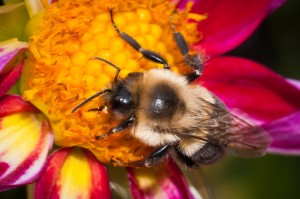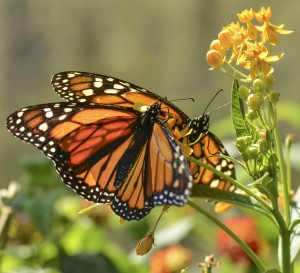 As farmers take to the fields for spring planting, the Minnesota Corn Growers Association (MCGA) and the University of Minnesota Bee Lab are reminding farmers to keep their farms as pollinator-friendly as possible.
As farmers take to the fields for spring planting, the Minnesota Corn Growers Association (MCGA) and the University of Minnesota Bee Lab are reminding farmers to keep their farms as pollinator-friendly as possible.
“By taking some simple precautions, farmers can continue making a big difference in protecting pollinating insects like bees and butterflies,” said Noah Hultgren, a farmer in Raymond, Minn., and President of MCGA.
Both MCGA and the Bee Lab recommend the following while planting:
- Minimize dust. Follow planter manufacturer instructions when using treated seed to minimize abrasion. When possible, use deflector equipment to direct exhaust toward the ground.
- Dawn or dust. Apply pesticides near bee colonies at dawn or dusk, when bees are not flying.
- Prevent drift. Spot spray pests when possible and prevent drift during application. Follow federal guidelines found on insecticide labels and do not allow insecticides to drift onto flowering plants.
- Low toxicity. When possible, use pesticide formulations with low toxicity to pollinators, particularly bees.
According to Marla Spivak, a MacArthur Fellow, Distinguished McKnight Professor and Extension Entomologist with the U of M’s Bee Lab, honey bees forage 3 miles or more, on average, around their colony every day when temperatures are above 55 degrees.
“It is important beekeepers and farmers have an open line of communication about insecticide use,” Spivak said. “Beekeepers cannot move their bees or close them up to prevent exposure to pesticides, so it is important for applicators to follow the label and not apply bee-toxic insecticides, or allow them to drift onto flowers while bees and other pollinators are foraging during the day.”
Spivak also highlighted the importance of working together.
 “Farmers and beekeepers can coordinate activities if there is good communication between them,” she said. “Beekeepers understand the need to control crop pests, and they welcome the opportunity to work together with farmers to ensure effective management of row crop agriculture while protecting and maintaining the health of bees.”
“Farmers and beekeepers can coordinate activities if there is good communication between them,” she said. “Beekeepers understand the need to control crop pests, and they welcome the opportunity to work together with farmers to ensure effective management of row crop agriculture while protecting and maintaining the health of bees.”
MCGA and the Bee Lab also suggest taking the following steps to make your farm more pollinator-friendly:
- Floral resources. Plant abundant, diverse and appealing floral resources in areas in and around your farm, and keep those flowers from pesticide drift and contamination. Examples include forbs, shrubs and blooming trees. Use small and large spaces in the farm landscape to create habitat
- Plant diversity. Add pollinator-friendly plants along buffers near waterways, fallow fields, set-aside acres, field and road borders, ditches and wetlands.
- Inter-seeding. To increase species diversity, introduce pollinator-friendly plants into existing stands of grass.
- Group individual flowers together to provide easier and more efficient access for bees.
For more information on pollinator-friendly planting practices and making your farm more accessible to pollinating insects, check out MCGA’s Pollinator Guide. Information from the Bee Lab is available at beelab.umn.edu.
With more than 7,200 members, MCGA is one of the largest grassroots farm organizations in the United States. The U of M’s Bee Lab conducts research to promote the health of bee pollinators.

